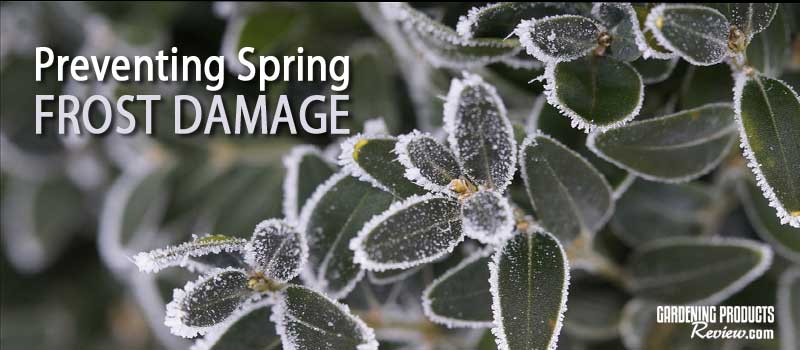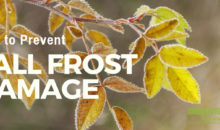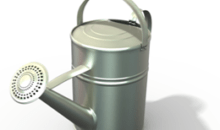Preventing Spring Frost Damage in the Garden
We independently evaluate all recommended products and services. If you click on links we provide, we may receive compensation.

How to Prevent Spring Frost Damage
As the weather warms, new leaves start to emerge, and the landscape takes on a beautiful, soft green color, it’s tempting to rush right into planting and other gardening tasks. But a brutal cold snap can quickly damage or kill new plants and ruin your garden plans for the season. Here are some things you can do to protect your plants from spring frost damage.
What Are Frost-Free Dates?
The “average frost-free” and “average first frost” dates are the dates by which frost will occur 50% of the time.
Know the average last frost date for your area
This is the date by which you can safely assume that no more frosts or freezes will occur until fall. Check out a site like The Old Farmer’s Almanac to find your expected last frost date. However, be aware that frosts can, and do, occur after the last predicted frost date.
Watch the weather forecast
Watch weather reports and weather.gov (the National Weather Service) for frost warnings, watches and advisories. If the weather forecast calls for cool, clear nights with low humidity, often following a windless, chilly afternoon, then a frost is likely.
Don’t worry about windchill – windchill refers to the wind’s ability to remove heat from warm-blooded creatures that generate their own heat, which plants don’t do.
And don’t be fooled by warm spring days – night-time temperatures can drop quickly and sharply.
Understand what a frost/freeze warning is – and isn’t
Official frost/freeze warnings—which mean the event is imminent or already occurring—are issued by the National Weather Service only when frosts threaten after the average last freeze date. So, if April 15 is the average last frost/freeze date in your area, warnings will be posted only after that date—even if it has been an unusually warm spring and you’ve been able to start planting before April 15.
Avoid planting tender plants in low-lying areas
Cold air “sinks” into low-lying areas. These “frost pockets” form on clear, calm nights when heat rises from the earth’s surface and cold, denser air sinks down.
Provide wind protection
Although plants aren’t affected by wind chill, cold blowing wind can dry out the leaf surface and cause damage. Plant marginally hardy trees, shrubs and perennials where they will be protected from winds, such as behind a row of evergreens or near a wall or fence that will radiate extra heat.
Water plants well the evening before a frost
This may not be necessary in spring, when soils are generally moist from melting snow. However, if your soil has dried out, give it a good water when a hard frost is expected. Moist soil holds up to four times more heat than dry soil. Moist soil also conducts heat to the soil surface faster than dry soil, helping to keep the air above the soil about 5 degrees warmer than when the surface is dry.
Cover plants
If frost is predicted, cover tender plants, newly planted perennials, and anything with sensitive new growth or flower buds.
Any material can be used to cover the plants, but woven fabrics are better insulators then plastics or paper. Many home gardeners use old bed sheets or tablecloths to cover their plants but a better option, particularly for potted plants and shrubs, is the Planket Frost Protection Cover. [Read the Review Here]
Covering plants traps heat and can give you 2 to 5 degrees F protection. The covers can be laid right over the plants, or can be supported on stakes (which is a better option if a hard freeze is expected – protection is less wherever the cover touches the plant).
The best time to apply covers is in the late afternoon after the wind has died down. Remove covers the next morning before the sun hits them.
Protect container plantings
Move container plantings to a sheltered but unheated location, such as on a porch or into a garage or shed. If you forget to protect potted plants and they’re affected by frost, don’t try to warm them by bringing them indoors; the sudden change in temperature would damage them further.
Damage control
Once frost damage occurs, nothing can be done to reverse the damage. If you find tender plants covered in frost, try spraying them with water to wash the ice crystals away. Letting ice melt in the sun will cause irreversible tissue damage to the plant. Although it may survive, it will likely have deformed leaves, leaf spots, and uneven growth. All but the hardiest frost-damaged annuals will likely die.





